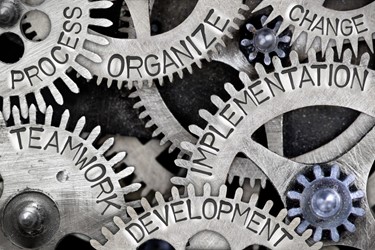Business Process Redesign From The Customer's Vantage Point
By Jeff Oskin, president and CEO, Jolt Consulting Group

American business author and management professor Michael Le Beauf famously said, “A satisfied customer is the best business strategy of all.” But how can a service organization truly anticipate what will satisfy the customer, especially in today’s world where savvy consumers demand ever-evolving and more engaging experiences?
Creating a positive customer experience (CX) has a profound impact on loyalty and service revenue growth. However, enabling customer-facing employees with the a holistic 360° view of information needed to provide heightened service can prove challenging. Finding the balance between technology and process efficiencies to impact CX is also an ongoing high-wire act.
Evaluating Efficiencies Vs. Customer Expectations
Every customer interaction is an opportunity to positively influence CX and there are certain activities that have a greater effect on relationships than others. Although many companies mean well, they do not provide the customer a frictionless experience; in other words, they inadvertently create roadblocks that impede the customer from easily interacting with the service organization. For example, how many times have you been asked to enter an account or phone number via an automated attendant with the promise of “quickly getting you to the right place,” only to be asked the very same information when you actually reach a human? This is an example of a process filled with friction that frustrates us all. It started with the best of intentions — streamline the process to reduce call times, yet in reality has failed miserably because of a disconnect between technology and process. This disconnect ends up frustrating the customer and degrading their experience. Although technology and process optimization is a necessary business practice, without a direct connection to the customer — and the customers’ needs — it can create a disconnect.
That’s why it’s imperative that service organizations view business processes and the supporting technology through the lens of the customer and focus on improving customer engagement. Viewing from the customer lens creates heightened awareness and increased priority on removing “friction” from processes. For example, a service organization may structure their organizational model in departmental “silos” in order to drive resource specialization; for example, separating the customer support and schedule/dispatch functions. However, in this scenario, when a customer phones a call center for support and to request service, they need to be handled and transferred to multiple people in order to have their request fulfilled. This may make sense organizationally, but does the customer really want to be bounced around multiple people versus having one call agent handle all their needs? This is unnecessary friction in the process and negatively impacts the CX.
When customers are engaged, they are not only satisfied in their interactions with a company, but they are also loyal and willing to maintain – or even grow – their spend with the company.[1] Figuring out exactly what your customers expect from you, then exceeding those expectations via people, processes and technology, will help you solidify your place as an expert in delivering outstanding CX.
Technology Tips & Traps
How precisely does an organization approach the massive undertaking of delving into the customer’s psyche and developing business processes to support their desires? Utilizing technology is certainly a sound start, but it’s not the complete answer for business process redesign.
For example, even the best-laid plans are often wrought with pitfalls. According to a 2017 Aberdeen study, 43 percent of companies currently have a process to map customer journeys.[2] Although beneficial in theory, oftentimes this exercise is just that, a one-time event that doesn’t quite account for the dynamic nature of the customer experience.
The most effective way to keep up with changing customer behaviors to ensure business process are continually relevant is to have real-time visibility into customer journeys. When was the last time you called your own service organization “as a customer” to see the experience first-hand? What did you learn? Was the experience easy or was there friction? Are their different channels that are easier to navigate than others for the customer? This type of insight enables a better understanding of customer behaviors and helps an organization drive business process redesign to achieve enhanced CX. Combined with supporting technology, employees are empowered with the relevant insights needed to meet (and exceed) buyer expectations.[3] Since CX is a 24/7 occurrence, it’s imperative for organizations to clearly define who “owns” CX, including every employee from entry-level to the CEO.
Conclusion
Deciding on the balance between internally focused business process efficiency goals and customer experience is not an easy feat. There are many technologies and processes that are “shiny objects” which can distract from how the customer actually perceives your business. It’s important for each company to monitor CX with real-time metrics and insight into the actual customer experience to make decisions quicker, influence the customer journey, and identify business process trends to positively manage customer interactions. The more positive the customer experience, the more likely customer are to remain loyal.
